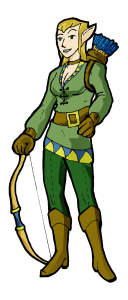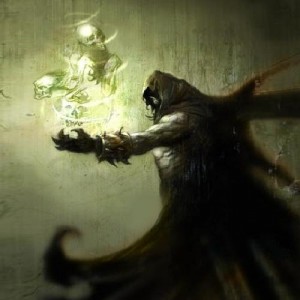I’ve noticed a disturbing trend during my last few gaming sessions. The Fighter consistently deals more damage than my Rogue. We’re 9th level, almost at paragon, and I’m struggling to deal more damage than the Fighter. Fundamentally, something seems wrong when the defender can dish out more damage than the striker. My numbers should be consistently higher on a round for round basis, instead my jaw drops as I hear how much damage he’s dealing.
Category: Class Discussions
It pays to do your homework when building a character. I’ve played some tough characters in my day, but the Battlerager Fighter I played in a recent LFR game was the toughest melee character I’ve ever played. This is one of the character builds I presented in the Characters Who Deal the Most Damage article from last month and after seeing him in action I don’t know why you’d want to play any other kind of Fighter.
I’ve discovered the best possible combination of race, class and equipment to ensure that your character will deal more damage every round than any other character. These builds are 100% legal and by the book. I’ve followed all the rules and used only core books published by Wizards. I didn’t make the rules, but I’m sure as hell going to exploit them for my benefit. Keep reading to find out how.
Do you define your character by his class or his role? We continue to look at roles in 4e and their defining characteristics. We’ve already explored the idea of how to make the Fighter a striker and we pondered whether the roles could be redefined. But this is just the tip of the iceberg when it comes to looking at roles. Since this is a new element in 4e perhaps it can be done better. We think there is room to introduce some new house rules around roles, but before we start developing them we thought it prudent to take a deeper look at how the existing presentation of roles affect the game.
The Fighter as a Striker
You’ve decided that your next character will be an archer and your primary weapon will be the longbow. But you’re not interested in playing a tree-hugging, one-with-nature Ranger. You want to play a tough as nails Fighter in plate armor who is a longbow master. Interesting character concept, but can you make this character using the 4e mechanics?
Redefining Character Roles
The advent of class roles to 4e D&D changed our perception of character classes. All classes now fit into one of four predefined roles within the party: controller, defender, leader and striker. Even though we’ve only had these four roles since the release of 4e last summer, they have become engrained in the discussion of gaming groups.
These four classifications are quickly becoming more than just roles. You could argue that they have become the new default character classes and that the current classes as we know them are just archetypes of the controller, defender, leader and striker. What I’m seeing more often are players deciding to play the striker and select whether they’d like to try the arcane, divine, martial or primal archetype of that class.
Rangers: A Breed Apart
 You are the protector of the wild, guardian of forbidden frontiers and shepherd to the weak. You attack your foe with blade, bow or beast. You provide no warning of your attack, dispatching your opponents quickly and decisively. You are a Ranger, and to you falls the duty and the privilege of fighting to protect the natural world.
You are the protector of the wild, guardian of forbidden frontiers and shepherd to the weak. You attack your foe with blade, bow or beast. You provide no warning of your attack, dispatching your opponents quickly and decisively. You are a Ranger, and to you falls the duty and the privilege of fighting to protect the natural world.
In a recent poll held here at Dungeon’s Master we asked which class in the Players Handbook was most deadly. The response favoured the Ranger over all other options. As a result I’ve decided to take a deeper look at the class to explain just why it is such a deadly choice.
Necromancer: Epic Tier
 It’s Friday the 13th and we thought what better way to celebrate than with some Necromancer Epic Tier powers. The Necromancer Epic Tier powers follow up on our previous posts containing Necromancer powers for the Heroic Tier and Paragon Path.
It’s Friday the 13th and we thought what better way to celebrate than with some Necromancer Epic Tier powers. The Necromancer Epic Tier powers follow up on our previous posts containing Necromancer powers for the Heroic Tier and Paragon Path.
With Wizards of the Coast releasing Arcane Powers later this year it’s only a matter of time before we have the official Necromancer Paragon Path and a slew of powers to support it. In the meantime, if you’re playing a high level Dungeon Delve and would like to play a Necromancer at the Epic Tier we hope that these powers will add some flavour to your game.
What Class Are You? – Wimwick
Wizards of the Coast wants to know what class you are. It’s to help determine the classes that will be released in PHB3. Ok, maybe not but it’s a fun little quiz.
Me I’m a Rogue, but that’s no suprise. I knew I was a Rogue when I introduced myself to you, so I can’t say I’m shocked at the outcome..
The quiz is fun, but it isn’t rocket science to figure out what class you’ll end up with. Check it out.

D&D Home Page – What Class Are You? – Build A Character – D&D Compendium
Yesterday, Ameron congratulated Wizards of the Coast for removing familiars from 4e D&D. While many of you may agree that familiars were an unnecessary game mechanic that added little value, others may miss the little critters. We’ve since learned that Wizards is bringing back familiars later this year in Arcane Power. But for those of you who don’t want to wait that long, we present our take on familiars.
Why would someone miss familiars you might ask? Let’s take a look why this might be the case. Familiars are cool. That’s right, having a hawk circling the battlefield or a snake wrapped around your staff is just a cool statement about your Wizard. It adds to your PC’s personality and can provide for some interesting role playing. Is that a Ferret in your pocket or…?